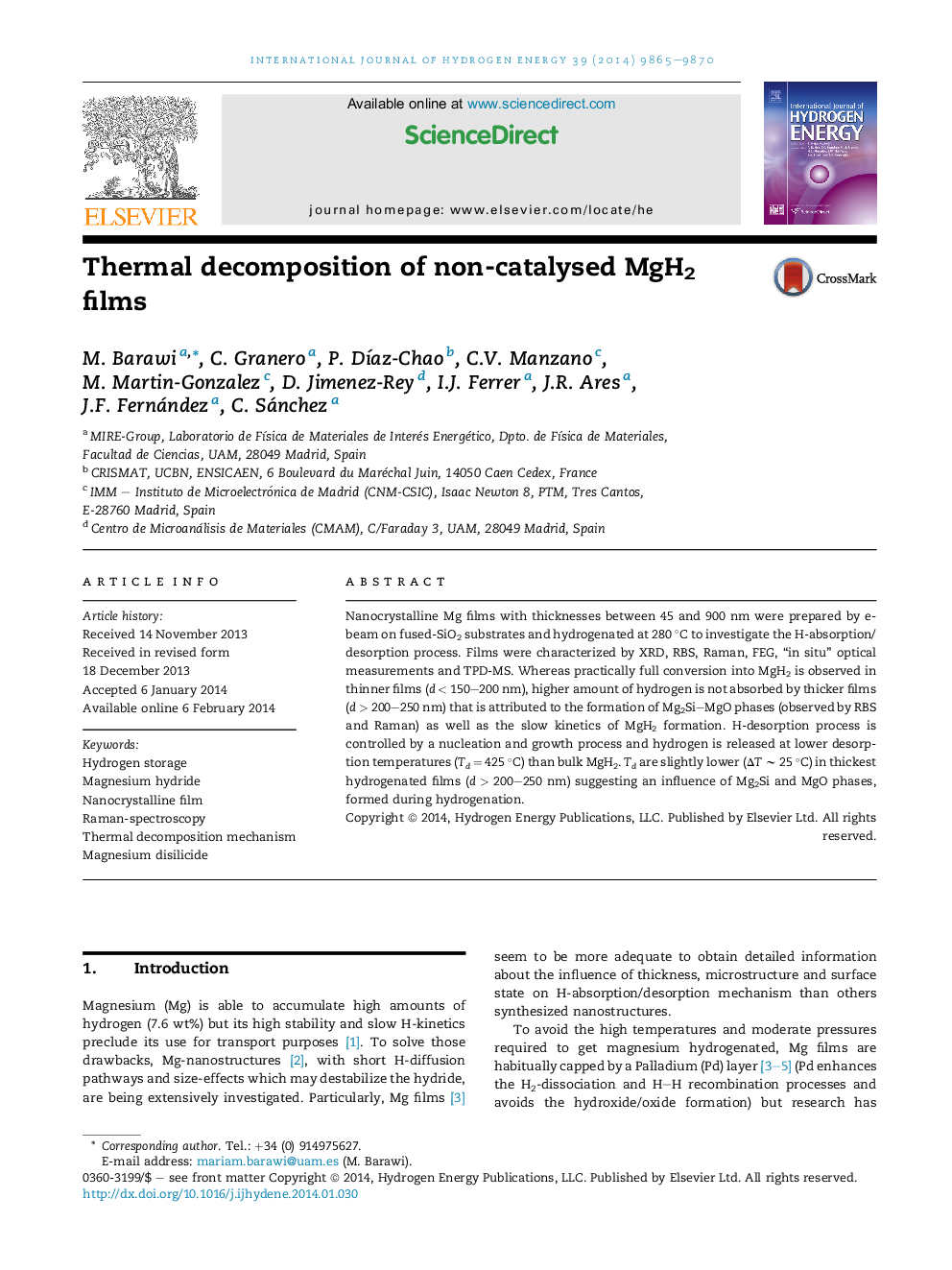| Article ID | Journal | Published Year | Pages | File Type |
|---|---|---|---|---|
| 7719259 | International Journal of Hydrogen Energy | 2014 | 6 Pages |
Abstract
Nanocrystalline Mg films with thicknesses between 45 and 900 nm were prepared by e-beam on fused-SiO2 substrates and hydrogenated at 280 °C to investigate the H-absorption/desorption process. Films were characterized by XRD, RBS, Raman, FEG, “in situ” optical measurements and TPD-MS. Whereas practically full conversion into MgH2 is observed in thinner films (d < 150-200 nm), higher amount of hydrogen is not absorbed by thicker films (d > 200-250 nm) that is attributed to the formation of Mg2Si-MgO phases (observed by RBS and Raman) as well as the slow kinetics of MgH2 formation. H-desorption process is controlled by a nucleation and growth process and hydrogen is released at lower desorption temperatures (Td = 425 °C) than bulk MgH2. Td are slightly lower (ÎT â¼Â 25 °C) in thickest hydrogenated films (d > 200-250 nm) suggesting an influence of Mg2Si and MgO phases, formed during hydrogenation.
Keywords
Related Topics
Physical Sciences and Engineering
Chemistry
Electrochemistry
Authors
M. Barawi, C. Granero, P. DÃaz-Chao, C.V. Manzano, M. Martin-Gonzalez, D. Jimenez-Rey, I.J. Ferrer, J.R. Ares, J.F. Fernández, C. Sánchez,
